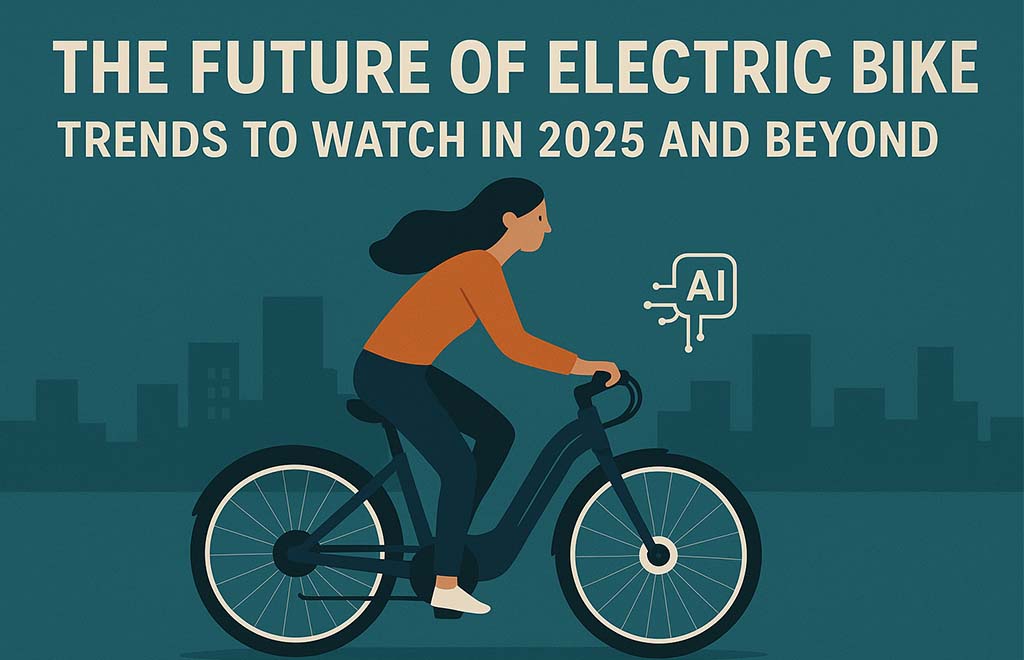Electric bikes (e-bikes) are no longer a niche novelty—they’re reshaping urban mobility, redefining adventure, and revolutionizing how we think about transportation. By 2025, the global e-bike market is projected to hit $622.5 billion, driven by a blend of eco-conscious consumers, cutting-edge tech, and a race to dominate the “last mile” of travel. But what’s next for this electrified revolution? Let’s explore the trends shaping the future of e-bikes.
1. Explosive Market Growth: From Niche to Necessity
The e-bike market isn’t just growing—it’s sprinting. Analysts predict a 10-12% CAGR through 2030, with Europe and North America leading adoption. Here’s why:
Urbanization & Traffic Woes: Cities are choking on congestion. E-bikes offer a nimble alternative, slicing through gridlock while slashing emissions. In the U.S., e-bike sales surged 145% between 2019–2022.
Government Incentives: Countries like Germany and the Netherlands subsidize e-bike purchases, while cities like Paris invest in bike lanes and charging hubs.
Cost Efficiency: With lithium-ion battery prices dropping (projected under $100/kWh by 2025), e-bikes are becoming affordable for millions10.
Regional Hotspots:
Asia-Pacific: Dominates 45% of global sales, fueled by China’s massive production and India’s urban boom.
Europe: A $244.2 billion market by 2030, driven by strict emissions laws.
North America: The fastest-growing region, with e-bikes replacing cars for 56% of short commutes.
2. Tech Innovations Redefining Performance
E-bikes are shedding their “motorized bicycles” image to become tech powerhouses.
Battery Breakthroughs
Lithium-ion remains king, but innovation is relentless:
Solid-State Batteries: Promising 30% longer range and faster charging, these could hit markets by 2026.
Battery Swapping: Companies like Gogoro are piloting “swap stations,” letting riders exchange drained batteries in seconds—ideal for delivery fleets.
Recycling Solutions: Startups are tackling battery waste, with 95% recovery rates for lithium and cobalt.
Smarter, Lighter, Stronger
AI Integration: Urtopia’s GPT-powered e-bikes analyze terrain and adjust torque in real time.
3D-Printed Frames: Urtopia’s Titanium Zero weighs just 10kg—half the average e-bike—thanks to aerospace-grade materials.
Self-Diagnostic Systems: Bosch’s Smart System alerts riders to maintenance needs via app, reducing downtime.
3. The Rise of Hyper-Specialized Models
One-size-fits-all? Not anymore.
Cargo E-Bikes: Delivery giants like Amazon and DHL are adopting heavy-duty models (e.g., Riese & Müller Load 75) for urban logistics.
Adventure E-Bikes: Brands like Specialized offer 200km-range models for off-road enthusiasts.
Foldables: Brompton’s Electric C-Line folds into a backpack-friendly size, perfect for hybrid commuters.
Price Tiers:
Budget (500–500–1,000): Dominated by Chinese brands like Aima and Yadea.
Premium ($2,500+): Features like torque sensors, carbon frames, and IoT connectivity.
4. The Battle for the Last Mile
E-bikes are winning the war against cars and scooters for short trips:
Shared Mobility: Lime and Bird now deploy e-bike fleets in 150+ cities, with subscriptions up 200% since 2023.
Delivery Revolution: Food delivery apps report 35% faster times with e-bikes vs. cars in dense areas.
5. Challenges: Roadblocks on the Path to Dominance
Despite the hype, hurdles remain:
Regulatory Chaos: Speed limits vary wildly—25 km/h in Europe vs. 32 km/h in the U.S.—confusing riders and lawmakers.
Safety Concerns: Cheap batteries caused 1,200 fires in NYC alone in 2024, prompting stricter UL certification rules.
Supply Chain Snarls: Lithium shortages could spike prices by 20% by 2026.
6. The Road Ahead: What’s Next?
Autonomous E-Bikes: Trials of self-balancing bikes (à la Honda’s Riding Assist) are underway in Tokyo.
Solar Integration: Photovoltaic panels embedded in frames could add 15% range daily.
Health Tech: Future models may sync with wearables to adjust assistance based on heart rate.
Conclusion
The e-bike revolution is just shifting gears. By 2030, they’ll likely account for 30% of urban trips globally5. For brands, the key to winning lies in innovation (think lighter batteries, smarter AI) and adaptability (navigating regulations and sustainability demands). For riders? Strap in—the future is electric, efficient, and exhilarating.
FAQs
Will e-bikes replace cars in cities?
Likely for short trips—studies show 60% of car commutes are under 8km, a perfect e-bike range.Are e-bikes eco-friendly?
Yes, but battery recycling remains critical. New systems recover 95% of materials.How long do e-bike batteries last?
Most last 3–5 years, but solid-state tech could double that.Can I ride an e-bike in the rain?
High-end models are IP67-rated (waterproof), but check certifications.What’s the fastest e-bike?
The Delfast Top 3.0 hits 80 km/h, though legality varies.




